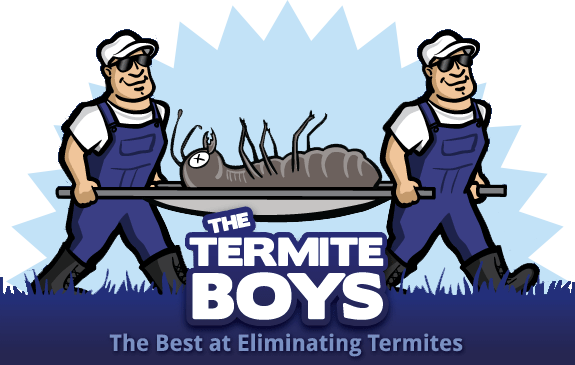Have you noticed mysterious damage in your wooden furniture or a puzzling pile of wood dust? It might be time to investigate a silent invader—termites. These tiny pests work quietly but can cause significant damage over time, making it crucial for homeowners to know how to identify their presence early on. In this blog post, we’ll explore how you can spot these unwelcome guests and safeguard your home from their destructive tendencies.
The Stealthy Nature of Termites
Termites are often called silent destroyers because they can chew through wood, flooring, and even wallpaper without being detected. These insects thrive in dark, humid environments and are found in many parts of the world. By understanding the characteristics of termites, you can better prepare yourself to recognize the signs of an infestation.
Understanding the Termite Life Cycle
To effectively identify termites, it’s essential to understand their life cycle. Termites live in colonies and have a structured social system, including workers, soldiers, and reproductives. Workers build and maintain the nest, while soldiers protect it. Reproductives, including the queen and king, are responsible for expanding the colony.
The life cycle begins when the queen lays eggs, which hatch into larvae. These larvae develop into one of the three castes based on the colony’s needs. Understanding this cycle helps in identifying what type of termites you might be dealing with.
Different Types of Termites
Several species of termites can invade homes, but the most common ones include subterranean, drywood, and dampwood termites. Subterranean termites build mud tubes for protection and are commonly found in the soil. Drywood termites, on the other hand, infest wood directly and do not require contact with soil. Dampwood termites prefer moist areas and are typically found in decaying wood.
Each type of termite presents unique challenges, so recognizing which one has infiltrated your home is crucial for effective pest control.
Tell-Tale Signs of a Termite Infestation
Catching a termite infestation early can save you from costly damage. While termites are experts at staying hidden, they do leave behind clues that can help you spot their presence.
Mud Tubes and Tunnels
One of the most common signs of subterranean termites is the presence of mud tubes. These small, pencil-sized tunnels are used by termites to travel between their nest and food source while maintaining moisture. Check foundation walls, crawl spaces, or any area where wood meets the ground for these tell-tale pathways.
Hollowed or Damaged Wood
Termites eat wood from the inside out, leaving a thin veneer or the wood’s surface intact. Tap on wooden surfaces around your home. If you hear a hollow sound, it could indicate termite activity. Additionally, look for unexplained wood damage or crumbling wood structures.
Discarded Wings and Frass
Swarmers, or reproductive termites, leave their colony to start new ones. After swarming, they shed their wings, which can often be found near windowsills or doorways. Also, drywood termites leave behind frass, a wood-colored droppings that looks like sawdust. Discovering either of these signs is a strong indicator of a termite problem.
What Attracts Termites to Your Home?
Knowing what attracts termites to your home can help prevent future infestations. These pests are drawn to specific conditions and materials that make your home an inviting feast.
Wood and Cellulose Materials
Termites feed primarily on cellulose, found in wood and other plant materials. Wooden structures, including furniture, floors, and walls, provide an abundant food source. Even paper products and cardboard boxes can attract these insects.
Moisture and Humidity
Moist environments are ideal for termites, especially subterranean and dampwood species. Leaky pipes, poor drainage, and inadequate ventilation can create high humidity levels, making your home more appealing to termites.
Cracks and Entry Points
Termites can access your home through tiny cracks in the foundation or walls. Seal any gaps or openings around utility lines, windows, and doors to prevent easy entry for these pests.
Tools and Techniques for Termite Detection
Detecting termites requires careful observation and sometimes specialized tools. While some signs are visible to the naked eye, others may need closer inspection.
Visual Inspections
Perform regular inspections of your home, focusing on vulnerable areas like the basement, crawl spaces, and attic. Look for signs of damage, mud tubes, or discarded wings. A flashlight and screwdriver can aid in examining dark or hard-to-reach areas.
Moisture Meters and Infrared Cameras
High moisture levels often indicate termite activity. A moisture meter can help detect damp areas that might harbor termites. Infrared cameras are another tool that can reveal temperature changes associated with termite nests within walls.
Termite Detection Systems
Consider installing termite detection systems around your property’s perimeter. These bait stations attract termites and provide an early warning of infestation. Professional pest control services can also offer more advanced detection methods.
Prevention is Better Than Cure
Preventing termites from entering your home is often easier and more cost-effective than dealing with an infestation. Implementing proactive measures can help keep these pests at bay.
Reduce Moisture Levels
Address any sources of excess moisture in your home. Fix leaks promptly, ensure proper drainage, and maintain ventilation in areas prone to humidity. Consider using a dehumidifier in damp spaces.
Store Wood Properly
Keep firewood, lumber, and other wooden materials away from your home’s foundation. Elevate and cover stored wood to prevent direct contact with the ground and exposure to moisture.
Regular Maintenance and Inspection
Routine home maintenance can help identify potential entry points and conditions conducive to termites. Repair damaged roof tiles, inspect wooden decks, and seal any cracks or gaps in the structure.
When to Call in the Professionals
While early detection and prevention are vital, sometimes professional help is necessary to handle severe infestations. Knowing when to call in experts can save your home from extensive damage.
Signs You Need Professional Help
If you discover substantial damage, active termites, or multiple signs of infestation, it’s time to consult a pest control professional. They have the expertise and tools to assess the situation accurately and recommend appropriate treatments.
Choosing a Pest Control Service
Select a reputable pest control company with experience in termite management. Ask for references, verify credentials, and inquire about their treatment methods. A trustworthy service will provide a thorough inspection and a tailored plan to eradicate the infestation.
Understanding Treatment Options
Professional pest control services offer various treatment options, including chemical barriers, baits, and fumigation. Your provider should explain the benefits and drawbacks of each method, ensuring you make an informed decision.
Eco-Friendly Solutions for Termite Control
For homeowners seeking environmentally conscious options, several eco-friendly termite control methods are available. These alternatives minimize chemical use while effectively addressing infestations.
Botanical and Biological Treatments
Some pest control companies offer botanical treatments derived from plant-based oils that repel termites. Biological control methods, such as introducing nematodes or fungi, can also target termite populations without harming the environment.
Physical Barriers and Traps
Physical barriers, such as stainless steel mesh or sand, can prevent termites from entering your home. Additionally, non-toxic traps can capture termites and monitor their activity, reducing reliance on chemicals.
Integrated Pest Management (IPM)
IPM combines multiple strategies to manage termite populations sustainably. This approach includes environmental modifications, monitoring, and targeted treatments, focusing on long-term prevention and minimal environmental impact.
Myths About Termites You Should Ignore
Misunderstandings about termites can lead to ineffective control efforts. Debunking common myths helps homeowners make informed decisions about prevention and treatment.
Myth 1: Termites Only Target Old Homes
Termites are opportunistic and can infest homes of any age. New constructions are equally susceptible if conditions are favorable for termites to thrive.
Myth 2: DIY Methods Are Sufficient
While DIY methods can help prevent termites, they may not eliminate an established infestation. Professional intervention is often necessary to tackle severe cases and ensure effective eradication.
Myth 3: Visible Damage Means It’s Too Late
Even if you notice visible damage, it doesn’t mean all hope is lost. Early detection and timely action can mitigate damage and prevent further degradation of your property.
The Importance of Regular Monitoring
Maintaining regular monitoring and vigilance is essential for long-term termite management. Consistent efforts can protect your home and provide peace of mind.
Scheduled Inspections
Set up a schedule for routine termite inspections, ideally every year or two. Consistent monitoring helps catch infestations early and prevents costly repairs.
Implementing Ongoing Prevention Measures
Continue implementing preventive measures, such as moisture control and proper wood storage. Stay informed about new developments in termite control to enhance your efforts.
Educating Your Household
Educate family members about the signs of termite activity and the importance of prevention. A collective effort ensures everyone remains vigilant and protects your home from potential threats.
Safeguarding Your Investment
Your home is a valuable investment, and protecting it from termites is a crucial aspect of its long-term preservation. By staying informed, vigilant, and proactive, you can shield your property from these silent threats.
Financial Implications of Termite Damage
Termite damage can have significant financial consequences, including costly repairs and reduced property value. Preventative measures and early intervention save both money and stress.
The Role of Homeowners’ Insurance
Review your homeowners’ insurance policy to understand its coverage regarding termite damage. Many policies do not cover termite-related repairs, making prevention even more critical.
Building a Resilient Home
By incorporating termite-resistant materials and construction techniques, you can build a resilient home that withstands potential infestations. Consult with builders and architects to explore innovative solutions that deter termites.
Termites may be small, but their impact can be substantial if left unchecked. Understanding how to identify these silent destroyers, taking preventive measures, and seeking professional assistance when necessary are essential steps to protect your home. Armed with knowledge and vigilance, you can safeguard your property and enjoy peace of mind knowing you’ve taken the right steps to deal with this hidden threat. For further insights and guidance, consider consulting with a pest control expert or exploring additional resources to fortify your defenses against termites.

